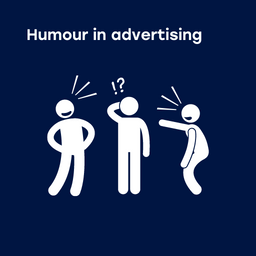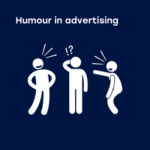Humour can be a powerful marketing tool and can provide many benefits for marketers. It triggers a positive emotional reaction which can help brands to stand out.
But like so many things, community attitudes towards humour change over time.
We recently completed some research that provides an insight into how Australians are navigating what is acceptable and unacceptable advertising content, including where Australians draw the line on humour.
The research indicates that there is a fine line between acceptable and unacceptable humour.
Where is the line?
What brings a smile to people’s faces can be affected by so many different factors – personal as well as political, environmental and cultural.
In 2021, Australians found these things more or less acceptable in advertising (from most acceptable to least acceptable):
- Light-hearted humour based on a person’s behaviour (like thrifty, very cautious, etc.)
- Light-hearted humour based on a person’s traits (like self-control, optimistic, etc.)
- Humour about someone having an unfortunate situation (like a car breaking down)
- Light-hearted humour based on a person’s job (like a white collar worker, janitor, etc.)
- Light-hearted humour based on age stereotypes
- Humour where a minority is making fun of a majority (where no one is exploiting a position of power)
- Light-hearted humour based on a person’s accent.
So, what do Australians no longer ‘pass off’ as acceptable humour?
The kind of humour found to be unacceptable in 2021 (starting with the very least acceptable) is:
- Humour that is sexualising male or female body parts
- Humour where a majority is making fun of a minority (where the minority is seen to have little or no power)
- Light-hearted humour based on racial stereotypes
- Light-hearted humour based on a person’s religion
- Light-hearted humour based on ethnic stereotypes
- Light-hearted humour based on sex or sexuality
- Light-hearted humour based on gender stereotypes
- Light-hearted humour based on physical attributes (like a big nose, short, etc.)
- Humour at the expense of an animal (no harm caused to the animal).
The key takeaway is that Australians are more accepting of humour that makes casual observations rather than personal attacks on an individual and their characteristics. As soon as these forms of humour become serious and either discriminatory or vilifying, that is when the humour crosses the line and is likely to breach the advertising rules.
The Community Panel
As a diverse group of everyday Australians, the Ad Standards Community Panel works together to apply common sense and sensitivity, reasoning, and interpretation of the codes when assessing ad content to decide whether an advertisement crosses a line.
To find out more about current perceptions of advertising, take a look at our research report.
If you’d like some advice about whether the humour in your ad would be considered acceptable, and would comply with the advertising rules, get in touch through our Copy Advice Service.

